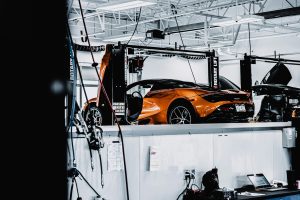The Critical Role of Vehicle Software in Performance
The automotive industry has been rapidly evolving in recent years with the advancement of technology. Gone are the days of simple mechanical components and gears, now vehicles are equipped with sophisticated software systems that have greatly enhanced their performance. With the rise of electric and autonomous vehicles, the role of vehicle software has become even more critical in ensuring safety, efficiency, and overall performance. In this article, we will delve into the crucial role of vehicle software in performance and how it is shaping the future of the automotive industry.
The Shift from Mechanical to Digital
The earliest vehicles relied solely on mechanical components such as engines, transmissions, and brakes to function. It wasn’t until the 1970s that computer technology was first introduced in cars with the use of engine control units (ECUs). These ECUs were responsible for managing the fuel mixture and emissions, significantly improving the performance of vehicles.
Fast forward to today, modern vehicles are equipped with dozens of electronic control units (ECUs) that utilize sophisticated software systems to control almost every aspect of the vehicle’s functions. From the engine to the brakes, to the infotainment system, everything is controlled by software. This shift from mechanical to digital has greatly impacted the performance of vehicles.
Optimizing Performance through Software
Engine Performance
The engine is the heart of the vehicle and is responsible for its overall performance. With the use of sophisticated software systems, engines can now run more efficiently, delivering more power while consuming less fuel. One notable example is the variable valve timing (VVT) technology, which is controlled by software to optimize the opening and closing of valves, resulting in improved performance and fuel efficiency.
Transmission Efficiency
The transmission is another critical component that directly affects the vehicle’s performance. The introduction of software-controlled transmissions, such as dual-clutch transmissions and continuously variable transmissions (CVT), has greatly improved the efficiency and performance of vehicles. These transmissions use software to predict and adjust shifts, resulting in smooth and efficient gear changes.
Braking Systems
With the increasing demand for safety features, braking systems have also seen major improvements, thanks to vehicle software. Anti-lock braking systems (ABS) and electronic stability control (ESC) use software to detect and correct sudden braking and loss of traction, ensuring the safety of the vehicle and its occupants. These technologies have greatly improved the overall performance of vehicles, especially in emergency situations.
Enhancing the Driving Experience
In addition to improving performance, vehicle software has also greatly enhanced the driving experience for consumers. Advanced infotainment systems now come equipped with features such as voice control, navigation, and smartphone integration, making driving more convenient and enjoyable. Adaptive cruise control, lane departure warning, and blind-spot monitoring are just a few examples of safety features that use software to enhance the driving experience.
The Future of Vehicle Software
As the automotive industry continues to evolve, the role of vehicle software is becoming even more critical. With the rise of electric and autonomous vehicles, software is the backbone of these vehicles, managing everything from power delivery to self-driving capabilities. Software updates and over-the-air updates also allow for continuous improvements and advancements in performance and safety.
Challenges of Vehicle Software
While vehicle software has greatly enhanced the performance and driving experience, it is not without its challenges. The complexity of software systems has led to concerns regarding cybersecurity, as vehicles become more vulnerable to hacking and cyber attacks. As more systems in vehicles become connected, the need for stringent cybersecurity measures is crucial to ensure the safety and performance of vehicles.
Conclusion
In conclusion, the role of vehicle software in performance cannot be underestimated. From optimizing engine performance to enhancing the driving experience, software has revolutionized the way vehicles operate. As the automotive industry continues to embrace new technologies, the critical role of vehicle software will continue to shape the future of this rapidly evolving industry.










